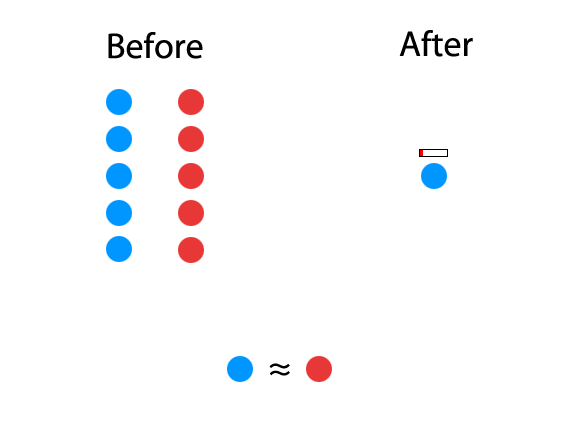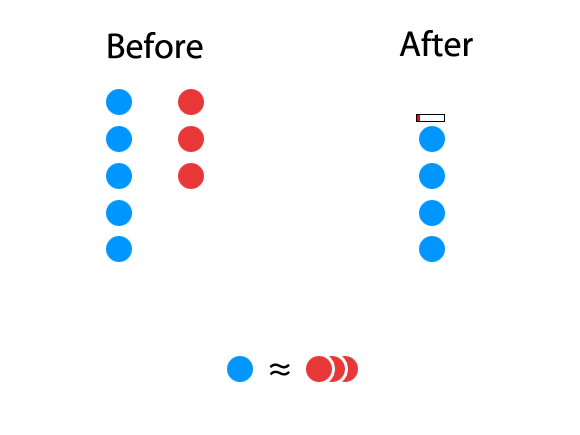I thought I try something new for a change. I will post some observations on how some combat mechanics in Star Craft 2 play out. A big part of RTS games is something called “Micro”. It actually means tweaking minor things to get a slight advantage. If Micro is used consistently the tiny advantages can pile up and may become a deciding factor in a close battle. Nowadays, the term often just boils down to combat. Conversely, economic and strategic decisions are referred to as “Macro”.
Using Micro is difficult to pull off as it requires players to use the interface in an efficient manner and to concentrate a lot on individual units. Most players will attempt anyway and fail horribly because they forget everything else (like me). Especially, lots of players like to concentrate on the flashy, complicated tricks like kiting and realize too late that they don’t have a proper grasp of the basic ideas (like me).
Hence, Micro for Noobs. I want to list some insights I personally found very helpful to get the most out of my units. I want to concentrate on the simple things which don’t take away all you attention but still can have a huge effect.
I want to start with a general principle. It is actually not even Micro anymore. It’s the fact that your units are more effective if they fight against smaller enemy forces. Before you sah “duh!”, let me explain. Imagine two armies with the same amount of identical units fighting. All things being equal, the armies will wipe each other out. Due to random chance, a minuscule, insignificant remainder of one of the armies will survive. In such a scenario, each unit in one army did pretty much the same amount of damage as the unit in the other army. The units in both armies were “worth” the same – they were equally effective.

In close battles, each enemy unit is worth the same. For each unit blue lost, the red army also lost a unit.
But what if a large army engages a smaller army. Of course the large army will win. But the trick is HOW they win. Because the large army is doing more damage, they will kill of the first units of the smaller army before the small army can score any kills themselves. These first losses will skew the battle even more towards the large army. The large army will wipe out the small army without taking any significant losses. Not only will the big army win. They will also have received overall less damage and lost less units. So their units end up being “worth” more than the units of the smaller army – they were more effective.

In this uneven battle, the winning player (blue) won twofold. First, he won the battle. Second, he also lost less units than red. Blue lost one unit, red lost 3. So that one lost unit ended up being more “worth” than several red units. The blue army could defeat a much larger amount of red units if they engaged them one after another in such small groups.
It’s easy to forget. Simple mental models of the combat work like math. You tend to subtract the amount of your units from the amount of units the enemy has. This is correct for close battles. 5 units against 5 units would be:
5 – 5 = 0
Which means the battle is equal. But the mental model fails horribly for uneven battles. 3 units against 5 units would be
5 – 3 = 2
We would expect the other player to lose the same amount of units as we do. This is not what happens. It’s more like:
5 – 3 = 4
This is the reason why pulling your armies together is so important in team battles.
This is the reason why in team battles, it is often more effective to counter-attack instead of helping a team mate being under attack from a superior force.
This is the reason why a rush can be so effective. Once an enemy army is in you base, even if you manage to produce units, the enemy army will kill each newly produced unit before it can do significant damage.
This is also the reason why so many pro-players frequently retreat from battles even if they seem to be doing fine. Starcraft 2 is generally a game where you always want to engage smaller armies.
Keeping this in mind is important. It will help you to get the most out of your units. The coolest thing about this is that it doesn’t actually require any attention from you like the other Micro tricks. All you need to do is simply to always retreat from battles skewed against you. Your units will be automatically more effective. Of course there are also other things you can do to skew a battle in your favor. But more on that next time.
Game Designer’s Corner: It’s interesting that StarCraft 2 has mechanics in place to support and exaggerate this principle. You may notice that in each example the blue player won but ended up with damaged units. Game mechanics like Medivacs, Protoss Shields and Zerg healing / Transfuson make sure that small amounts of damage can be restored so partial damage doesn’t actually count. This makes sure that armies are only effective if they are large enough to actually kill any units. Additionally, mechanics like Stimpacks help players with large armies to get an even greater advantage by spending a resource (unit health) they have in abundant quantities.





